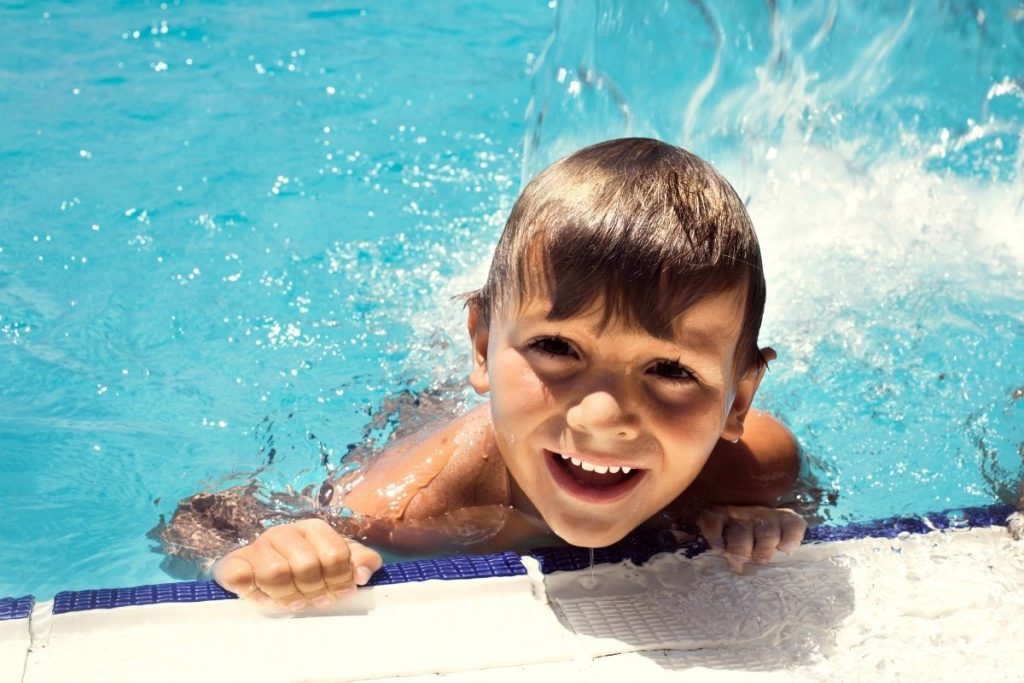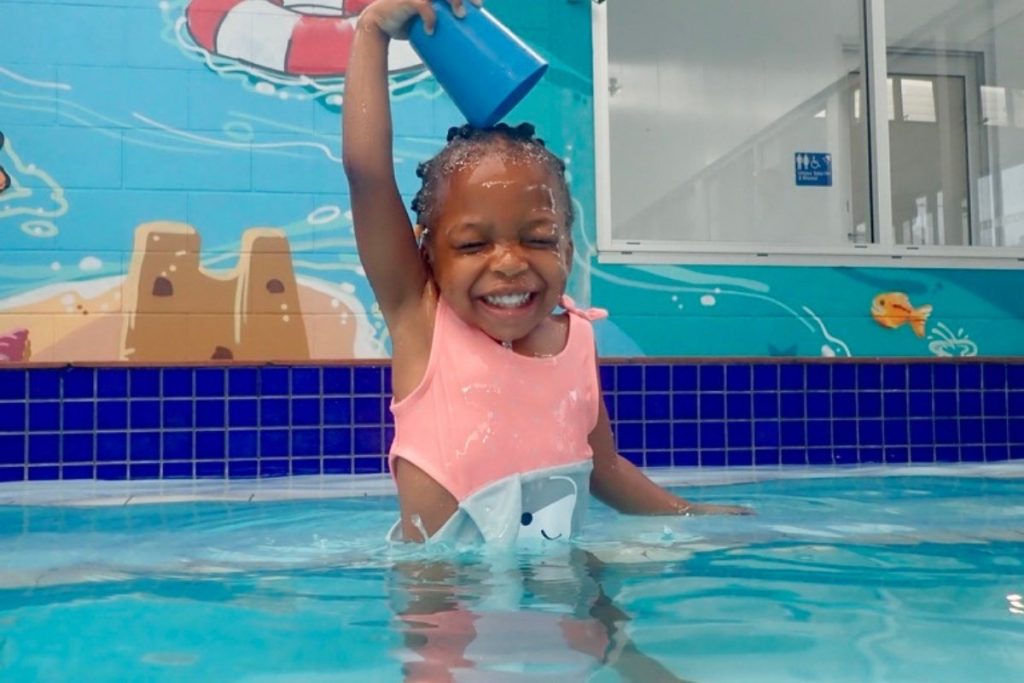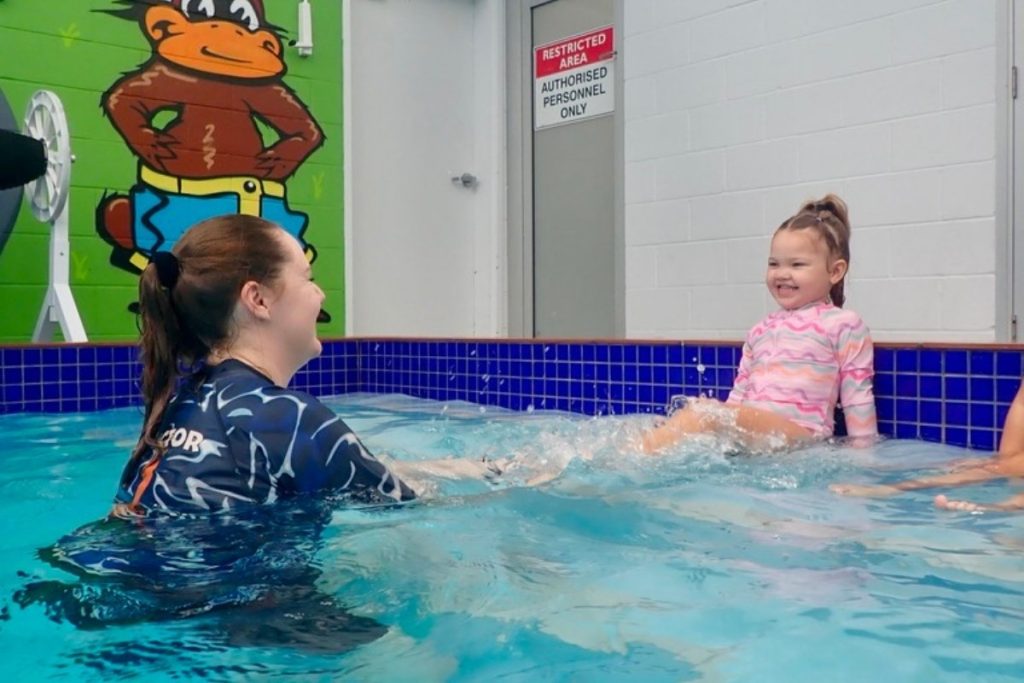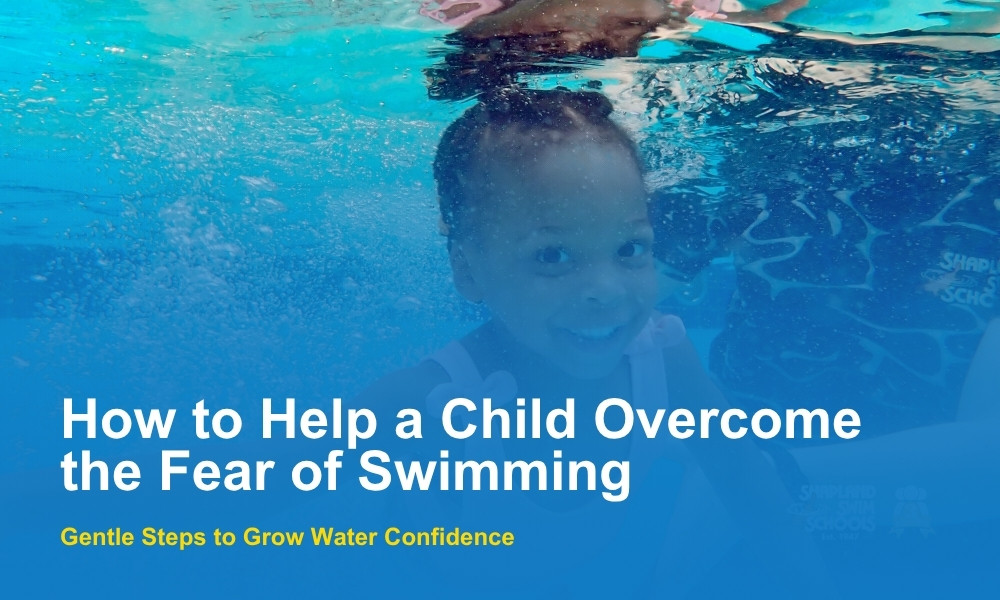Teaching your child to swim is more than just a life skill. It’s an act of empowerment, safety, and confidence-building. However, while time spent in the water will help you bond with your little one, the fear of swimming can hold them back and ruin the moment.
As a parent, understanding this swim fear and supporting your child is essential. Therefore, here are our suggestions on how to help your child overcome the fear of water.
A Truth About Overcoming the Fear of Swimming
As Shapland Swim Schools, we’ve helped many children overcome their fear of swimming. That is true whether they are scared of water after a slip in a backyard pool or general anxiety around water. Some start out too nervous to even dip their toes in. But with gentle encouragement and the right approach, they often grow into confident swimmers.
Our three-students-per-class model and calm, caring instructors, allow help children build trust and confidently glide underwater. This shows that choosing the right swim school can make all the difference in helping your child overcome their swimming anxiety and grow to love swimming.

Why Is Your Child Afraid to Swim?
Understanding your child’s fear of swimming is the first step in helping them move past it. Many children develop a water phobia due to negative past experiences or simple anxiety around the unknown. Here are common reasons why your child may be afraid of the water:
- A past water-related accident or bad experience.
- Separation anxiety in swim class settings.
- Discomfort with unfamiliar sensations like floating and splashing.
- Hearing frightening stories about the water. This can cause the fear of drowning.
- Sensory sensitivities, such as sound echoes and water temperature.
- Anxiety due to the strange noise, smell, or activity in unfamiliar environments.
- A general dislike of getting wet.
How to Help Your Child Overcome the Fear of Swimming?
It is normal for your child to be scared of water, especially if it’s their first time getting into water bodies. But with patience, encouragement, and safe exposure, they can easily overcome their fear and become confident swimmers. Here are expert tips to support them.
Acknowledge Their Fear
Start by validating your child’s emotions. Saying encouraging words like, “I understand you’re afraid of the water, but that’s okay,” shows empathy and builds trust.
After teaching swim lessons for years, I’ve learned that children who feel heard and supported are more likely to try again. Therefore, acknowledging their fear is not about pushing but guiding them gently toward confidence.
Start with Small Steps
Don’t throw your child into the deep end on the first day. Begin with baby steps like playing with water toys in the bath, dipping their toes in the shallow end, and practising blowing bubbles. Every child progresses at their own pace. Hence, these tiny victories may seem insignificant, but they lay the foundation for bigger wins as their water phobia fades away.
Make Water Time Fun
Children are more likely to overcome their swim fear when it’s associated with laughter and joy. Transform the pool into a place of play and not pressure.
Fortunately, at Shapland Swim Schools, we use engaging tools to distract from anxiety and focus on fun. These positive experiences rewire your child’s mind away from scary water associations.

Use Positive Language
Positive reinforcement builds confidence, while negative phrasing can instil fear. Avoid mentioning words like “drowning” or “scared” and start using phrases like “you’re doing so well.”
As swim instructors, we know that children thrive on affirmation, and positive language helps shape their internal narrative. Positive phrases also empower them to keep trying.
Set a Consistent Routine
Consistency builds familiarity, which breeds comfort. Make swimming part of your child’s weekly routine so it becomes a normal, expected activity. Irregular sessions can reignite anxiety, while regular exposure helps your child adjust and adapt.
We encourage you to bring your child for at least two swim classes per week to desensitise the fear of swimming.
Lead by Example
Children mirror what they see. If you are hesitant around water, they will see it and develop a fear of drowning. However, if you enjoy jumping in the water, they are more likely to follow.
Therefore, lead by example to show them that swimming is not something to be afraid of. This shared experience builds trust and makes your child feel safe doing it.
Practice at Home
Not sure where to start teaching your child how to swim? Start practising swimming with them at home. Even if you don’t have a pool, you can turn your bathtub into a learning zone and practice pouring water over the head or blowing bubbles.
This at-home desensitisation helps bridge the gap between fear and familiarity. Practicing outside of structured lessons also helps solidify progress made in class.
Praise Small Wins
Celebrate every bit of progress, from dipping a toe in the water to putting their face under for a second. Acknowledging these victories helps build confidence and reduce swim fear.
At Shapland, we always celebrate small milestones because they stack up to big breakthroughs. Praising small wins also teaches them to associate swimming with their childhood achievement instead of anxiety.
Know When to Take Breaks
Sometimes pushing too hard can overwhelm your child and make them panic. Always take a break if they seem tired. This does not mean failure but honouring their emotional limits. Use this downtime to reset with calm, dry activities or positive talk.
A compassionate pause can do magic in fighting anxiety as it teaches them not to fear water and return to swimming when they are ready.

Enrol in Professional Swim Lessons Near You
Consider enrolling your child in professional lessons designed to address the fear of swimming. At Shapland Swim Schools, we specialise in helping children move past water phobia through patient, individualised, and flexible swim lessons.
Our experienced swim teachers know how to teach your kid to swim safely, gradually, and effectively. Moreover, our semi-private classes create a low-stress and focused environment for your child to feel empowered and supported.

